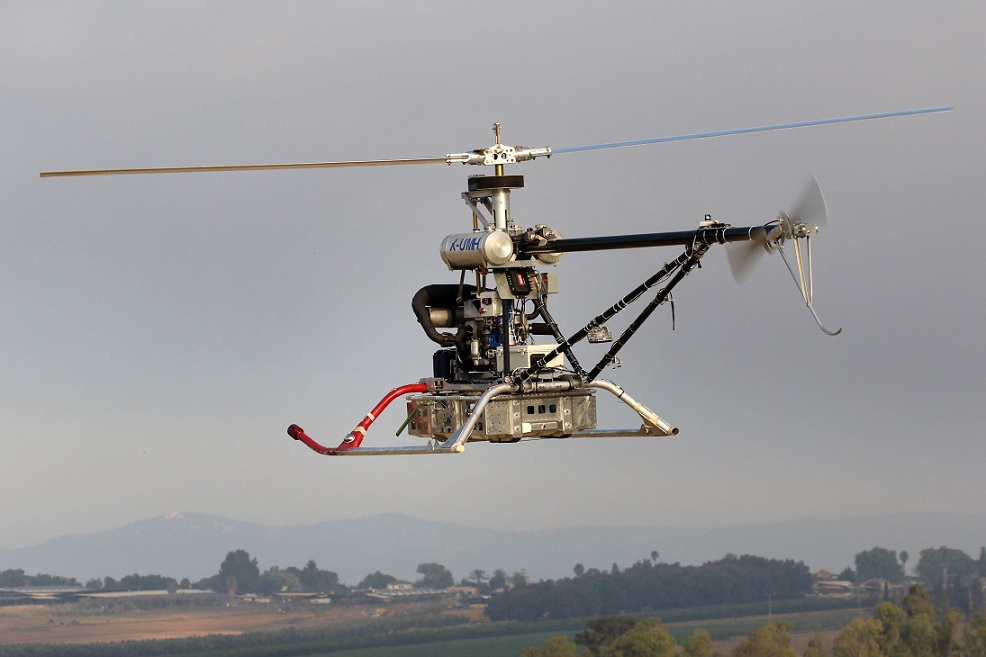This post is also available in:
 עברית (Hebrew)
עברית (Hebrew)
Israel Aerospace Industries’ (IAI) unmanned systems have successfully completed a proof of concept to high officials of the defense industry and the IDF. Recently developed by IAI, the Air Hopper took a part in a demonstration that covered two scenarios, one simulating carrying a seriously-wounded soldier to an extraction point for life-saving treatment, airborne monitoring of vital signs and real-time dispatch to the ground. The second scenario simulated carrying logistic supplies to an isolated force at the front line, which could not be accessed otherwise without risking more troops.
As an unmanned helicopter used mainly to provide fast logistic supplies to sites where ground access is difficult or dangerous, the Air Hopper is based on a small, manned helicopter with a payload of 100-180 kg (depending on the model), flight time of two hours and speed of up to 120 km/h. the Air Hopper runs on an internal combustion engine which uses ordinary, 95-octane fuel and its price is considerably lower than that of a manned transport helicopter. This allows procurement of multiple unmanned helicopters to achieve flexible deployment and low-cost provisioning to the front lines while significantly mitigating the risk to human lives.
According to IAI statement, the autonomous tactical system for logistic convoys responds to the need in transporting logistic equipment to the battlefield during warfare while preventing loss of lives and minimizing the risks faced by logistic convoys en route such as damage caused by roadside explosives, ambushes or anti-tank weapons. The operator using the autonomous system supervises the execution of the mission and the convoy’s vehicles in real time from a safe area outside the threat range of the battlefield.
The System’s open architecture renders it compatible with a range of platforms with no need for special adaptations, maintaining the performance level of the vehicle concurrently with the weight capacity of the platform. The system moves independently and precisely over prolonged periods of time, day or night, including in tough field conditions and in any weather without compromising the quality of performances required to successfully complete its mission.
In addition to the steering unit in the vehicles, the system is delivered with a sophisticated control system that allows it to manage many other operational capabilities such as vehicle control, real-time planning and updating of routes, updating the convoy’s behavior attributes, real-time receipt of mission data and a data communication system that allows it to communicate with the vehicles.


























